- Home
- Encyclopedia
- The “Lyre Girls:” First Women Newspaper Owners ...
The “Lyre Girls:” First Women Newspaper Owners in Wyoming
The Platte Valley Lyre debuted in Saratoga, Wyo., on June 7, 1888, the first newspaper to serve the local residents. The weekly made news again in the spring of 1890 when it was purchased by sisters Gertrude and Laura Huntington.
Just a few months later, on July 10, 1890, Gertrude became the first woman editor in the newly created state. Women in other states had edited a variety of publications for many years prior to this, however. Historian Sherilyn Cox Bennion named Sarah Moore Clarke of California as the first of nearly 300 women who edited 250 publications in the 11 western states between 1854 and 1899.
According to Bennion’s research, four women worked as editors in Wyoming during the 1890s. In addition to Gertrude Huntington, they were: Edith Chappell of the Buffalo Bulletin in 1897 and Mary Parmelee at the same weekly in 1899; and Cora Preston of the Wind River Mountaineer in 1899.
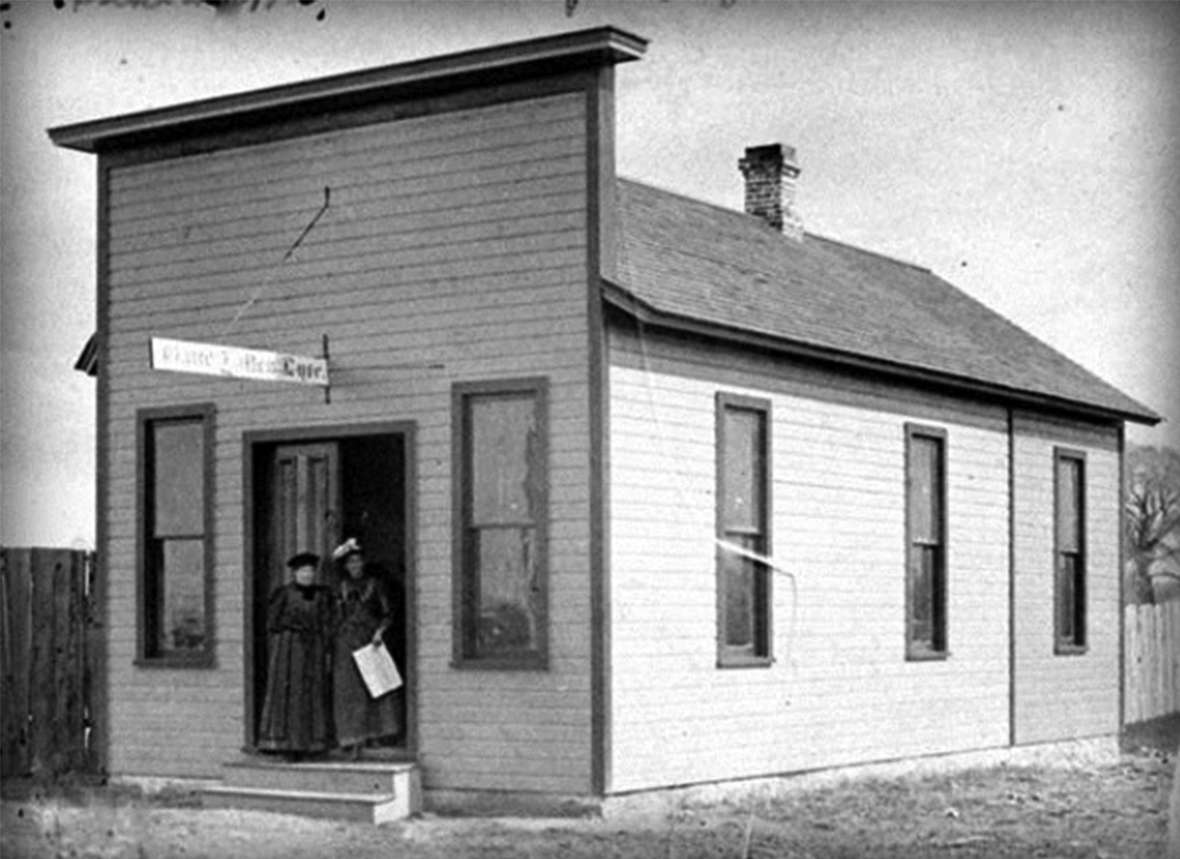
The Huntington sisters, though, were the first women to own a newspaper in Wyoming. The Lyre issue for July 10, 1890, celebrated Wyoming’s admittance as the 44th state, gave reports about the local Fourth of July festivities and urged citizens to create a fire department for the town. References to women’s suffrage appeared in the statehood article, but aside from her name appearing on the masthead as editor and publisher, Gertrude’s accomplishment went unheralded. The Lyre acknowledged its status as a Republican newspaper, and Gertrude explained that she had been “a member of that party from her cradle.”
The newspaper, which was first owned by George Caldwell, who had been referred to as the “Lurid Liar of Lander,” probably had a pun on that nickname in mind when he named his paper. Gertrude and Laura, who began working as the business manager in October 1890, became known as the “Lyre girls.” They set the type for the four-page newspaper by hand. Gertrude was 24 and Laura was 22. They had both studied at the Kansas Agricultural College in Manhattan, Kan.
They had come to Carbon County with their father, Rev. Roswell Elbridge Gerry Huntington, D.D., in 1886, when he began serving as Rawlins’ second Episcopal minister. In 1888, he began traveling to Saratoga—sometimes riding the 40 miles on horseback—to conduct services there.
The Church of the Heavenly Rest was soon built in the town, and in 1889, Rev. Huntington, who had received his education at Cambridge University in England, had served in the Civil War, had been involved in missionary work and had been rector of churches in New York, Illinois, Indiana, Missouri, and Kansas, became Saratoga’s first Episcopal minister. He and his wife, Florence, had nine children. Gertrude and Laura were the oldest daughters, followed by their siblings Frederick, Lucia, Arthur, Roberta, Carolyn, Florence Eleanor and Albert.
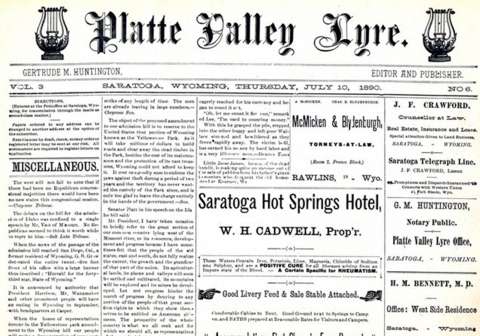
Rev. Huntington had worked in the newspaper business prior to his marriage and his decision to enter the ministry, and he likely helped his daughters with the purchase of the Lyre.
The Huntingtons published the newspaper from 1890 to1902, a vibrant period in the growth of the Platte Valley and the state. In addition to statehood, they covered the grand opening and masquerade ball held by the Hotel Wolf in 1893, the copper mining boom in Grand Encampment that began in 1897 and the 1898 farewell activities given for the 112 young men from the county who would participate in the Spanish-American War. One of them, Fred M. Wolf, was the son of the hotel’s owner. The younger Wolf drowned in July 1901 in the North Platte River near Saratoga
Throughout most of those years, another weekly, the Saratoga Sun, which began publishing in 1891, competed with the Lyre. Saratoga historian Gay Day Alcorn wrote of the friendly rivalry between the two in her book Tough Country. “The editors were of very different outlooks and backgrounds,” she stated, “and, by the time the Huntington sisters and John F. Crawford took over their respective editorial posts, many subscribers took both papers just to see what the editors chose to argue over each week. Not only were some community issues hotly debated, but each press placed emphasis on items of its own particular concern.”
A hint of the relationship shows in the Feb. 13, 1896, issue of the Lyre. It’s hard to tell if the conflict Gertrude is writing about here is physical—or if the face slapping is a metaphor for some other embarrassment. But she does seem to be enjoying her competitor’s discomfort when she writes, “Bro. J.F. Crawford had his face slapped again last Friday and is wearing a liberal supply of court plaster. He has our sympathy, but we do think it a pity that he cannot exercise a little more judgment in his utterances. As both parties to the scrap were men physically disabled and old soldiers at that, it appears to have been a fair and square fight. We don’t believe in the necessity of this ‘prize fighting’ business anyhow.”
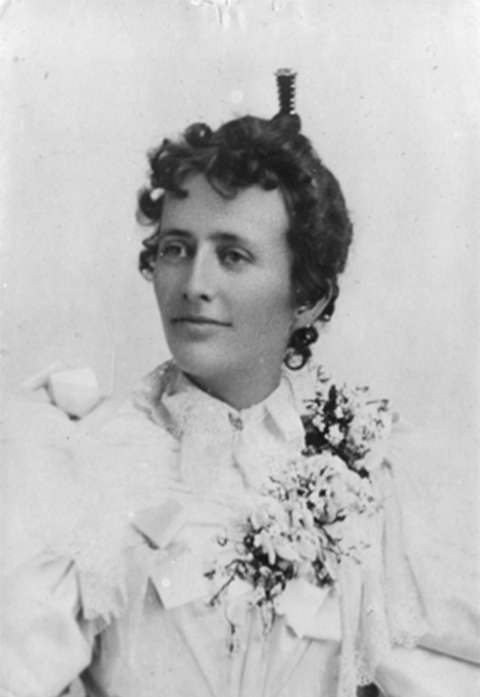
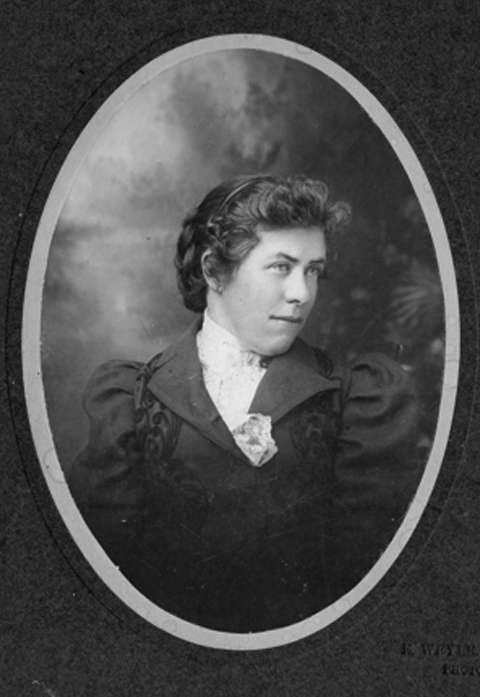 Editors of competing newspapers in Wyoming at the time often enjoyed berating each other. But Gertrude in this instance seemed unafraid to take on a sterner tone, rebuking Crawford for stepping out of line in what she seems to see as unnecessary provocation of strife. She continues, “We have been in the newspaper business six years and have never had a quarrel or a war of words in our office—and the Lyre does not hesitate to express its opinions, either. It is not so much what an editor says, as it is the manner in which it is said that causes unpleasantness of this sort and there is no earthly excuse for such affairs.”
Editors of competing newspapers in Wyoming at the time often enjoyed berating each other. But Gertrude in this instance seemed unafraid to take on a sterner tone, rebuking Crawford for stepping out of line in what she seems to see as unnecessary provocation of strife. She continues, “We have been in the newspaper business six years and have never had a quarrel or a war of words in our office—and the Lyre does not hesitate to express its opinions, either. It is not so much what an editor says, as it is the manner in which it is said that causes unpleasantness of this sort and there is no earthly excuse for such affairs.”
In 1896, the Lyre sold its subscriptions for $2.50 per year in advance, or 10 cents per copy. By 1897, the rate had increased to $3 a year. The Sun subscription rate was the same, but customers paid only 5 cents for individual issues.
Some coverage and advertisers overlapped, and both papers reported on mining and agricultural activities in the area, but in general, the Lyre carried more brief bits about local people as well as a regular column “For Women and Home,” that featured illustrations of the latest fashions and housekeeping suggestions. The Sun published more news articles and pieces from throughout the nation.
The Lyre also published lengthy pieces about annual teacher’s institutes, which were training programs for educators in the county. During her tenure at the Lyre, Gertrude Huntington was elected Carbon County schools superintendent four times: 1894, 1896, 1898 and 1900. She hosted the annual conferences in Rawlins. Her term coincided with that of Estelle Reel, Wyoming superintendent of public instruction, the first woman elected to a state office in Wyoming. Gertrude’s 1897 annual report to the state, the details of which she published in the Lyre, indicated that enrollment had increased from 1,118 to 1,242 in the 39 schools in the 25 Carbon County districts. The schools had received $26,457.38 in funds from the state and county while expenditures totaled only $20,324.08, leaving a surplus.
In 1898, Laura Huntington married 43-year-old attorney Alfred Heath, who had regularly advertised his services on the front pages of both the Lyre and the Sun. Laura and Gertrude’s younger sister Carolyn Huntington became the business manager.
In 1902, the Huntingtons sold the newspaper to W.B. Wiley, who renamed it the Saratoga State Record. J.F. Crawford, owner of the Saratoga Sun, bought it later that year and combined the two newspapers. That same year, another of the Huntington sisters, Roberta, married Rev. William Toole, and they settled in the Little Snake River Valley.
On Aug. 26, 1903, Heath died. A lengthy illness had caused him to rely upon Laura, of whom the Sun’s obituary stated, “It was unquestionably her devotion and tenderness that was the means of prolonging his life for the past three or four years.”
Carolyn married A.L. Clendenan on Dec. 10, 1903, and they worked together on the Dillon Doublejack, a newspaper in the mining camp of Dillon, at the Ferris-Haggerty copper mine west of Encampment in the Sierra Madre Mountains. Four days after she was married, Carolyn contracted typhoid. She died March 18, 1904. She was buried in Rawlins.
Rev. Huntington had retired in 1903 and returned to Rawlins. The last marriage ceremony he conducted was in March 1905 for his daughter Gertrude and Homer Merrell. Gov. Francis E. Warren had appointed Merrell, a Rawlins attorney, to replace Willis Van Devanter on the Wyoming Supreme Court when he resigned in 1890, and Merrell served from 1890-1893. Afterward he returned to his law practice.
Rev. Huntington died on May 25, 1905, just a few weeks shy of turning 85. Merrell suffered a stroke in 1911 and died Jan. 18, 1916, at the state hospital in Evanston. He had practiced law in Rawlins for 36 years. After selling the Lyre and prior to their marriage, Gertrude had worked in his law office. She continued to run the insurance business she had operated with her husband in Rawlins, and she was active in the community. She taught Sunday school and sang in the choir at the Episcopal church and chaired the local American Red Cross from the time of its organization until her death at St. Luke’s hospital in Denver in February 1925. According to her obituary, she “took a personal interest in everything she went into, and always accomplished whatever she started, and her many kind and charitable deeds will never be forgotten.”
After Alfred Heath’s death, Laura had worked in the Carbon County clerk of court’s office until 1911. Then she worked in the county assessor’s office until 1918, and then in the county treasurer’s office. In March 1922, she was appointed to the treasurer position to fill her predecessor’s unexpired term after his death. After Gertrude’s death in 1925, Laura took over the insurance business that the Merrells had owned. Her mother had lived with her until Mrs. Huntington died on July 30, 1925.
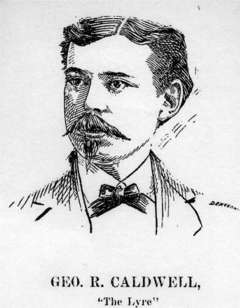
In 1927, author Cora M. Beach included features about Mrs. Huntington and Gertrude and Laura in her book Women of Wyoming. On Jan. 3, 1933, a local news item noted Laura’s “splendid record” and reported that the audited records turned over to the incoming treasurer, William A. Johnson, “checked to the penney [sic]…” Why she left her office was not explained.
Laura wrote an article about her early day newspaper work for the Rawlins Daily Times in 1952. She said, “We succeeded admirably financially,” and explained that she and Gertrude devised a “Mrs. Annie Bush” to write articles for the Lyre to retort to Saratoga Sun owner J.F. Crawford’s pieces written by “Professor” and “Observer.” Laura also recalled the numerous Valentines sent to the “Lyre girls” that decorated their office every year.
Laura died in October 1962 at age 94. She was buried in the Rawlins cemetery. One sister, Roberta Toole, and one brother, Arthur, survived her, along with several nieces and nephews.
Laura had written in her earlier article for the Rawlins Daily Times that there “were not many forms of entertainment for the young people” at the time she and her sister Gertrude were publishing the Lyre. But the newspaper had provided local residents with entertainment and information throughout the years the Huntington sisters produced it. The newspaper, with its original issues housed at the Grand Encampment Museum in Encampment, Wyo., and also available online, continues to be a valuable resource for researchers, history buffs and others who are interested in learning more about the early days of the Platte Valley and the lives of its people.
Resources
- Alcorn, Gay Day. Tough Country: The History of the Saratoga and Encampment Valley 1825-1895. Saratoga, Wyo.: Legacy Press, 1984, 176, 186. The Church of the Heavenly Rest eventually became St. Barnabas Episcopal Church, which still exists and offers services today. According to Alcorn, Alfred Heath designed the belfry, and the bell, cast by S.C. Bell Foundry in Ohio, became known as “the largest and finest in the State of Wyoming.”
- Angell, Jim. Director, Wyoming Press Association. Telephone interview with author, July 21, 2015.
- Beach, Cora M. Women of Wyoming, vol. 2. Casper, Wyo.: S.E. Boyer and Co., 1927.
- Bennion, Sherilyn Cox. Equal to the Occasion: Women Editors of the
- Nineteenth- Century West. Reno, Nev.: University of Nevada Press, 1990, 2-3, 38-41, 178.
- Carbon County election files. Gertrude Huntington, Carbon County superintendent: Nov. 6, 1894; Nov. 3, 1896; Nov. 8, 1898; Nov. 6, 1900.
- Carbon County Museum, Rawlins, Wyo.
- Clendenan, Carolyn. Obituary. Rawlins Republican, March 19, 1904, and Saratoga Sun, March 24, 1904.
- “Death of Alfred Heath.” Saratoga Sun, Aug. 27, 1903, 1.
- Drake, Kerry. “Estelle Reel: First Woman Elected to Statewide Office in Wyoming.” WyoHistory.org. Accessed July 22, 2015, at /encyclopedia/estelle-reel.
- “Fred M. Wolf Drowned,” Saratoga Sun, July 25, 1901, 1. Accessed July 23, 2015, at http://newspapers.wyo.gov.
- “Happy 125th Saratoga Sun,” Saratoga Sun, Aug. 1, 2012, 1.
- Heath, Laura C. “‘Liar’ Founded Lyre,” Rawlins Daily Times, April 4, 1952.
- “Homer Merrell, 1890-1893.” Wyoming State Archives Wiki. Accessed July 17, 2015, at http://wyomingstatearchives.wikispaces.com/Homer+Merrell.
- “Hon. Homer H. Merrell, Deceased.” Rawlins Republican, Jan. 20, 1916, 1.
- Huntington sisters collections. Scrapbooks. Carbon County Museum, Rawlins, Wyo. These include items about Laura’s work as Carbon County treasurer and her obituary as well as items about Gertrude’s wedding to Homer Merrell and both of their obituaries:
Scrapbook of Mrs. Ed F. Bennett, 1949-1952; Scrapbook No. 3, Mrs. Ed Bennett, 1952; and Scrapbook created from 1910 Census Book. - “Mrs. Laura Heath Dies Here at 76; Services Wednesday.” Rawlins Daily Times, Oct. 16, 1962. (The newspaper misstated her age in this headline. She had been born Sept. 2, 1868. She was 94.)
- “Mrs. Laura Heath Is Real Pioneer, Came Here in 1886.” Typed ms., information described as obtained from June 9, 1927, issue of the Rawlins Republican. Carbon County Museum files, Rawlins, Wyo.
- Moulton, Candy. “The Toole Family: A Life of Faithful Service on the Little Snake River.” Rawlins Daily Times, Fair Edition, Aug. 10, 1985, 11A.
- “Oldest Rector in the West.” Rawlins Republican, May 27, 1905, 1.
- Perue, Dick. Former owner of Saratoga Sun. Interview with author, Saratoga, Wyo., July 15, 2015.
- Platte Valley Lyre 1890-1901. Wyoming Newspapers. Accessed July 2015 at http://newspapers.wyo.gov.
- Saratoga Sun, 1891-1902. Wyoming Newspapers. Accessed July 2015 at http://newspapers.wyo.gov.
- Van Pelt, Lori. Dreamers and Schemers: Profiles from Carbon County, Wyoming’s Past. Glendo, Wyo.: High Plains Press, 1999, 91-94, 190.
- -----. “Willis Van Devanter: Cheyenne Lawyer and U.S. Supreme Court Justice.” WyoHistory.org. Accessed July 20, 2015, at /encyclopedia/willis-van-devanter-cheyenne-lawyer-and-us-supreme-court-justice.
- Tyler, Carolyn B., ed. Wyoming Newspapers: A Centennial History. Cheyenne, Wyo.: Pioneer Printing and Stationery Co., 1990, 146-150.
- Wyoming Newspaper Directory. Cheyenne: Wyoming Press Association, 2015.
For Further Reading and Research
- Originals of the Platte Valley Lyre are housed at the Grand Encampment Museum, Issues of the newspaper from 1888-1901 are available online at Wyoming Newspapers at http://newspapers.wyo.gov, and they are also available in microfilm form at Coe Library at the University of Wyoming in Laramie, as are the newspapers listed below.
- Originals of another early day newspaper, the Carbon County Journal, dating from 1897-1914, plus 1939, are housed at the Carbon County Museum in Rawlins.
- Originals of the Saratoga Sun dating from 1891 through the present are kept at the newspaper office in Saratoga, Wyo.
- See more about these museums, the Saratoga Sun newspaper office and the University of Wyoming’s Coe Library in Field Trips information, below.
- The Coe Library at the University of Wyoming contains substantial selections of early Wyoming newspapers. For more on visiting the library, see the Field Trip listing, below. Papers may be viewed at the library on microfilm in the Media Collection, located outside Room 105. This collection also includes a DVD/video collection, audio CDs, audiocassettes, CD-ROMs and microforms. For more information, call the library at (307) 766-3190 or (800) 442-6757 or visit http://www-lib.uwyo.edu or http://libguides.uwyo.edu/MEDIA.
Illustrations
- The 1894 photo of Laura and Gertrude Huntington in the doorway of the Platte Valley Lyre office in Saratoga, Wyo., the images of Lyre founder George Caldwell and the July 10, 1890 Lyre front page are all from Historical Reproductions by Perue. The portraits of the Huntington sisters are from the collections of the Carbon County Museum. All are used with permission and thanks.
- Historical Reproductions by Perue is owned by Dick Perue of Saratoga, former editor and publisher of the Saratoga Sun.
- The former Lyre office, Perue notes, is located in downtown Saratoga on Bridge Street, east of the Wolf Hotel, and as of 2015 houses an art gallery. George Caldwell initially owned a paper in Lander, Wyoming Territory, and then moved to Rawlins and bought the Wyoming Tribune. Sometime later he discontinued the Tribune, moved all the equipment to Saratoga, and established the Platte Valley Lyre.
- Caldwell had good fun with the name of the paper, according to Perue’s research, writing at one point “We take this early opportunity of mildly saying that the LYRE was not named in order to give us an excuse for extensive indulgence in chin music,” and at another, “Indpendence is a great gift. From this standpoint the LYRE will be largely gifted. P.S.—All persons, who on reading the above, are guilty of the remark, ‘What a gifted Lyre,’ will be properly shot.”
- The initial issue appeared June 7, 1888. This image of the Lyre front page is actually from a facsimile printed in 1965 and distributed throughout the Saratoga/Encampment valley as part of the celebrations of Wyoming’s 75th anniversary of statehood.
